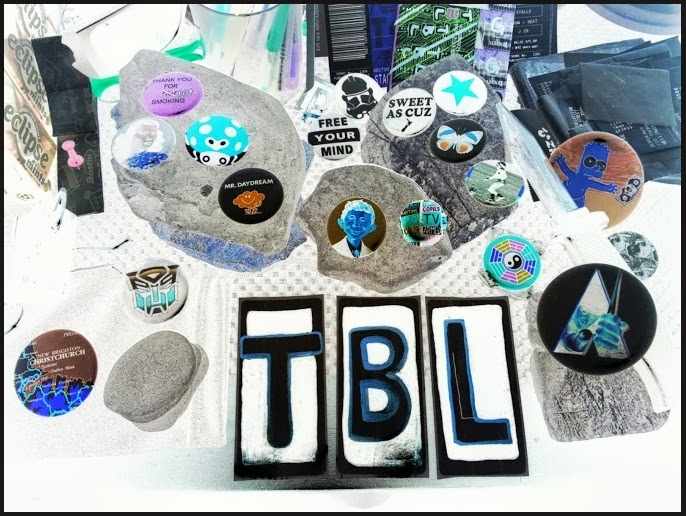Come ride in packs of twelve
to judge the moral dilemmas of others
not always cut and dry or tidy
talk for five hours and still not agree
life can be quite messy
can't clear my head

What are our reasons to stay alive
random tasks or nine to five
unprovable theories, facts, obsessions,
deep minutiae, shallow lessons
ironic humour with sporadic timing
acting dumb or occasionally miming
do what you would have done anyway
believe what you will then do as I say...
The accumulated remains of selected ideas in blog form
The Truth is Lies...
Wednesday, June 26, 2013
How Not To Be Interesting...
[citation needed]
Mental Dump Truck:
Drunk and obnoxious
Stoned and pitiful
Young and amazing
Old and fanciful
Guarded but lucid
Honoured but flattered
Eventful yet boring
Chaotic yet orderly
Cautious yet not
Mental Dump Truck:
Drunk and obnoxious
Stoned and pitiful
Young and amazing
Old and fanciful
Guarded but lucid
Honoured but flattered
Eventful yet boring
Chaotic yet orderly
Cautious yet not
Monday, June 17, 2013
Abandoned Mansions
More words about nonsense arranged in odd ways:
Deserted Highways
Grandiose Wealth
Bankrupted Concepts
Corrupt Inheritance
Scapegoated Nomads
Pious Symposium
Ornamental Embellishments
Emotional Honesty
Benign Distractions
Integral Maturity
Intricate Tapestries
Psychosomatic Adoption
Play
Experiment
Self-referential
Deny, deny, deny...
The future is yesterday
Interspecies interactions
Reactions engendered to nuture
Behaviour designed to create a response
Houses so big they look/feel like art museums.
So good we don't need to practice
Rumour, blame, accumulation
Symbols of dominance
Losing their lustre
Pride that blinds
Stagnant
Hubris
Thursday, June 13, 2013
Thursday, June 06, 2013
How About That Local Sports Team
More cut and paste lethargy non-action, cos I can...
Pretentious Inconsistent Twaddle:
Pretentious Inconsistent Twaddle:
The PIT maneuver is a pursuit tactic by which a pursuing car can force a fleeing car to abruptly turn sideways, causing the driver to lose control and stop. The backronym "PIT" has a number of different meanings, depending on the agency using it or school teaching it. The most common meanings are: Precision Immobilization Technique, Pursuit Immobilization Technique, Pursuit Intervention Technique, Push It Tough, Parallel Immobilization Technique, and Precision Intervention Tactic. In each case, the meaning is clear, regardless of how the acronym is explained. Other names for the same maneuver are: Tactical Car Intervention (TCI), tactical ramming, legal intervention, and fishtailing. The technique is typically used by law enforcement officers as a safer alternative with which to bring car chases to a conclusion. Other methods of terminating a pursuit include Tactical Pursuit And Containment (TPAC) and the use of spikes (also known by various trade names such as stop sticks or stingers). Attempting this maneuver against a motorcyclist is extremely dangerous and is prohibited by most countries.
Obejectify Objects Objectively:
More than a body: Mind perception and the nature of objectification.
By Gray, Kurt; Knobe, Joshua; Sheskin, Mark; Bloom, Paul; Barrett, Lisa Feldman
Journal of Personality and Social Psychology, Vol 101(6), Dec 2011, 1207-1220.
Abstract
According to models of objectification, viewing someone as a body induces de-mentalization, stripping away their psychological traits. Here evidence is presented for an alternative account, where a body focus does not diminish the attribution of all mental capacities but, instead, leads perceivers to infer a different kind of mind. Drawing on the distinction in mind perception between agency and experience, it is found that focusing on someone's body reduces perceptions of agency (self-control and action) but increases perceptions of experience (emotion and sensation). These effects were found when comparing targets represented by both revealing versus nonrevealing pictures (Experiments 1, 3, and 4) or by simply directing attention toward physical characteristics (Experiment 2). The effect of a body focus on mind perception also influenced moral intuitions, with those represented as a body seen to be less morally responsible (i.e., lesser moral agents) but more sensitive to harm (i.e., greater moral patients; Experiments 5 and 6). These effects suggest that a body focus does not cause objectification per se but, instead, leads to a redistribution of perceived mind. (PsycINFO Database Record (c) 2012 APA, all rights reserved)
Subscribe to:
Posts (Atom)
